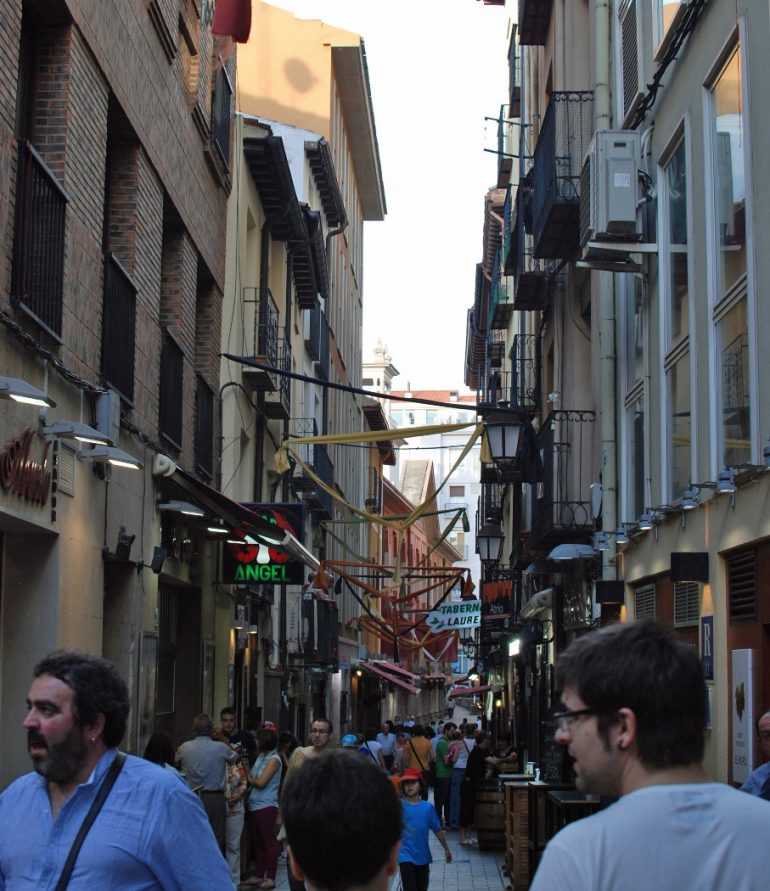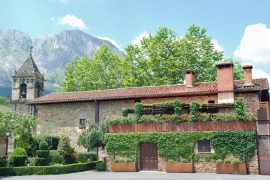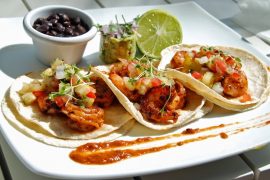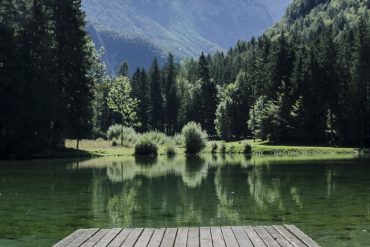Taking a break from our Rioja winery visits, we drove into Logroño for a lunch-time pincho crawl. Even many sophisticated travellers have never heard of Logroño, although it is the capital city of the Rioja wine region. The city of over 150,000 people did not appear to get many tourists, but Calle del Laurel, in the old city, has some of the best pincho-hopping we had on our trip. The pinchos rival those found in far more well-known San Sebastian, but at half the price.
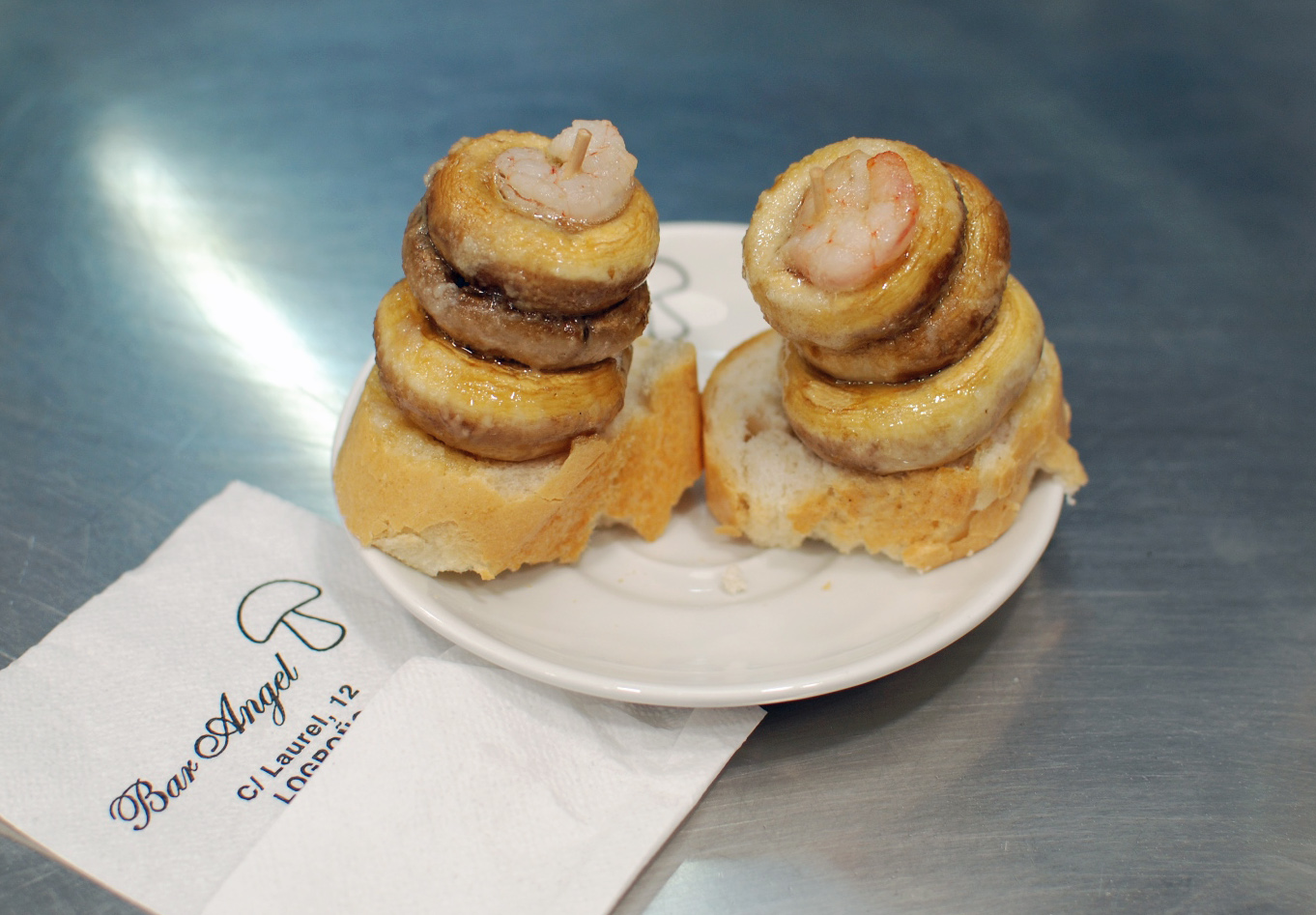
On Calle del Laurel, there are close to 50 pincho bars on just two blocks of real estate each serving one or more specialized treat. It was hard to decide where to begin. Fortunately, my love of mushrooms doused in garlicky olive oil pointed me to the local delicacy. Bar Angel served just one pincho – sauteed mushroom caps hit with garlic-infused olive oil and stacked on top crusty bread with a baby shrimp. It was hard the miss, as the garlicky aroma wafted down Calle del Laurel yards away.
Bar Soriano, a few steps away, served the same dish, but it seemed everyone that day was going to Bar Angel, and we were not disappointed – except for our inability to open our mouths wide enough to take a bite. Eventually, with garlicky mushroom juice running down our grinning faces, we figured it out. Finally, after several napkins, and a glass of white Rioja, we were ready for our next stop.
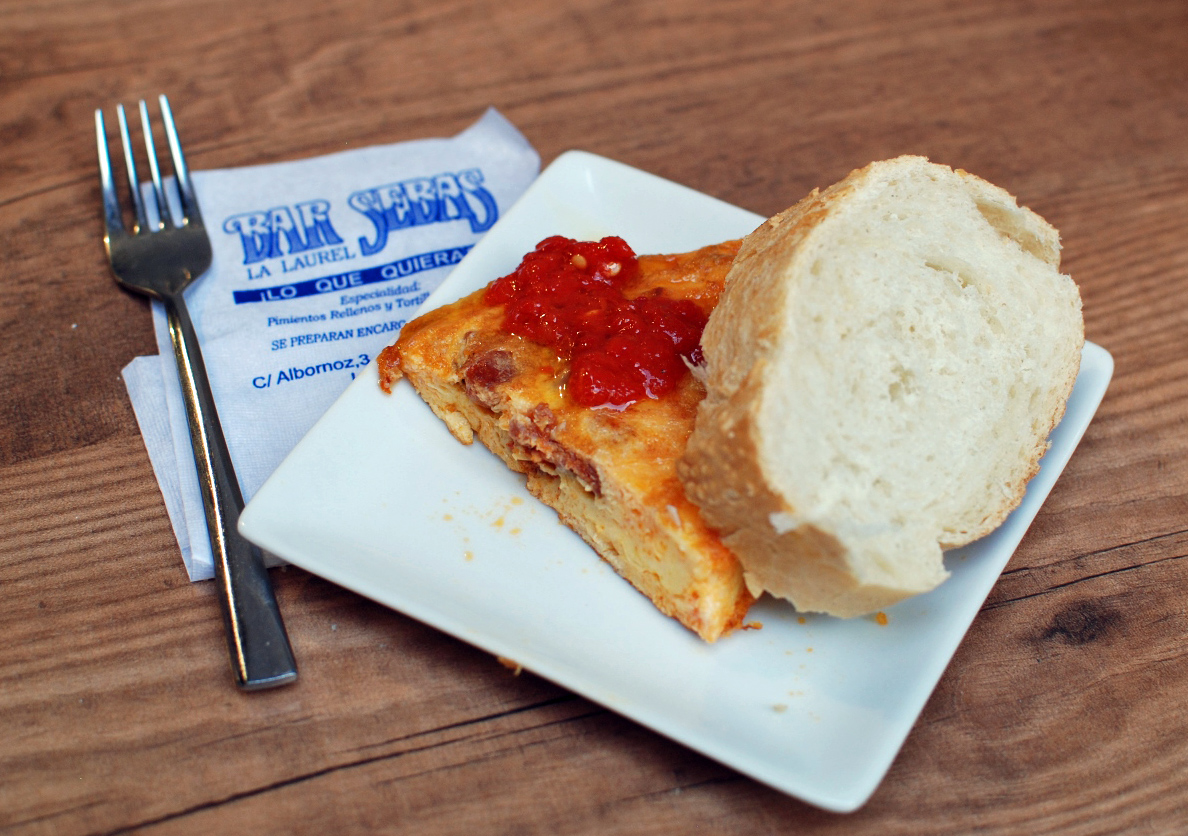
Just a few feet away we saw Bar Sebas with a big sign that said lo que quieras (whatever you want). That sounded promising. Apparently what we wanted were delicious tortillas filled with any number of meats or vegetables. We opted for the jamon tortilla topped with a spicy tomato salsa. Spicy ham, eggs, and potatoes—three of Spain’s signature ingredients—in pie form. Hard to beat that.
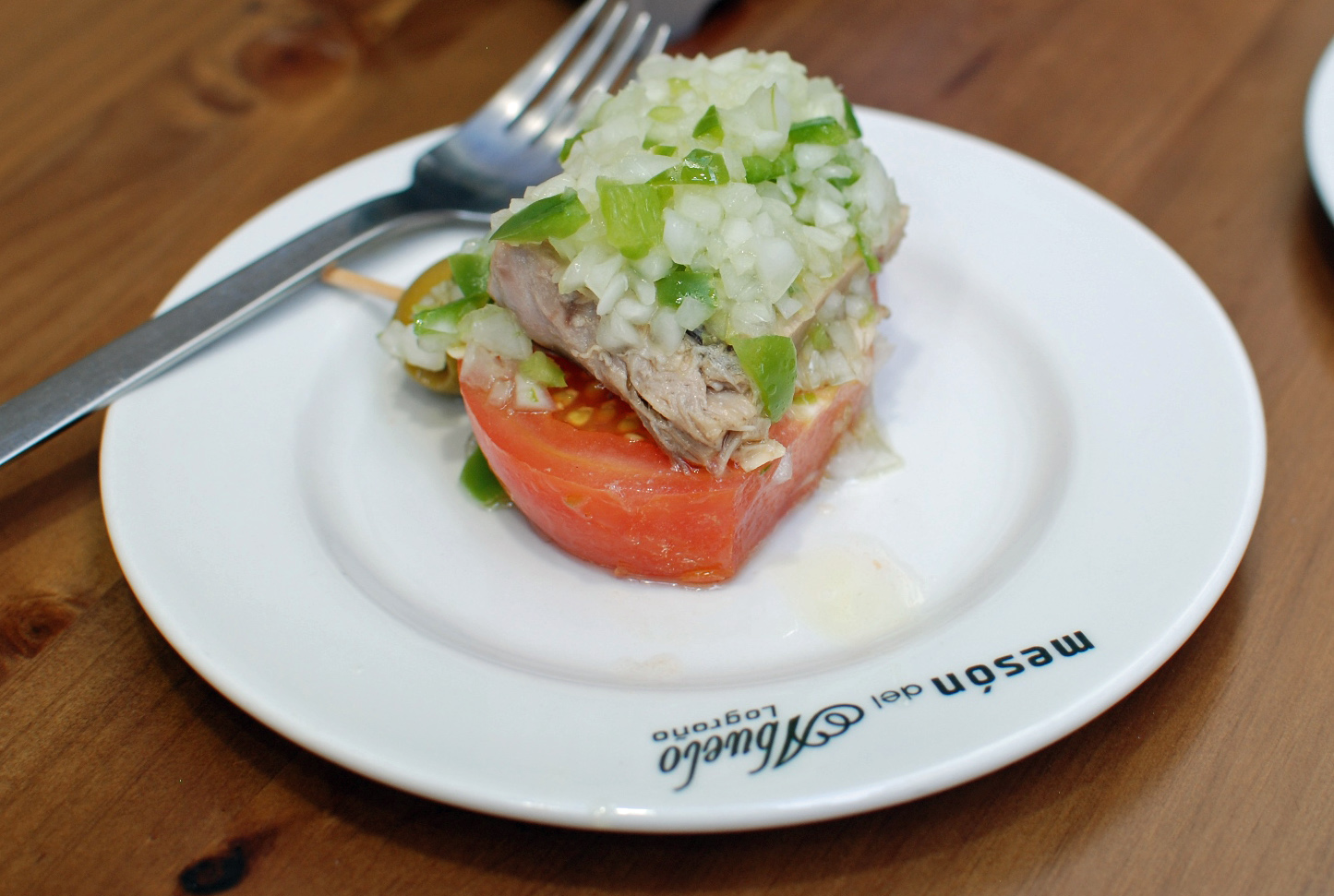
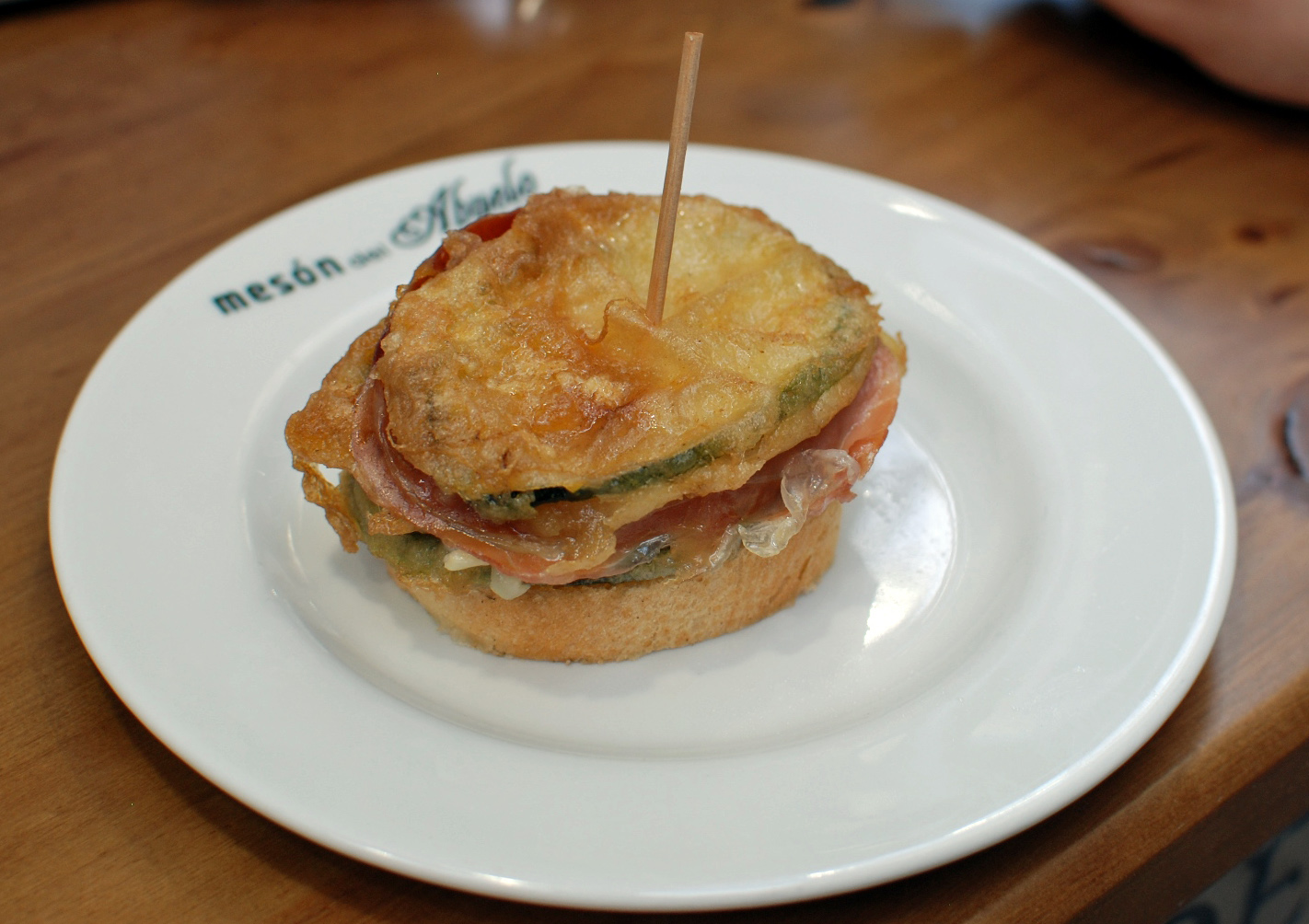 Feeling up for something lighter we stumbled a few doors down to Mesón del Abuelo (grandpa’s tavern) to see what grandpa was cooking. This bar was more spacious than the others and had far more variety. We tried a colorful ensalada de atún with tuna on top of a gliseningly-red tomato with minced sweet peppers and onions and drizzled with olive oil and vinegar. An olive-skewer tied it all together.
Feeling up for something lighter we stumbled a few doors down to Mesón del Abuelo (grandpa’s tavern) to see what grandpa was cooking. This bar was more spacious than the others and had far more variety. We tried a colorful ensalada de atún with tuna on top of a gliseningly-red tomato with minced sweet peppers and onions and drizzled with olive oil and vinegar. An olive-skewer tied it all together.
We resolved to make this tuna “salad” back in the states. We also dug into the crowd pleasing combination of fried zucchini on top crispy jamon, and melty manchego cheese on top of toasted bread.
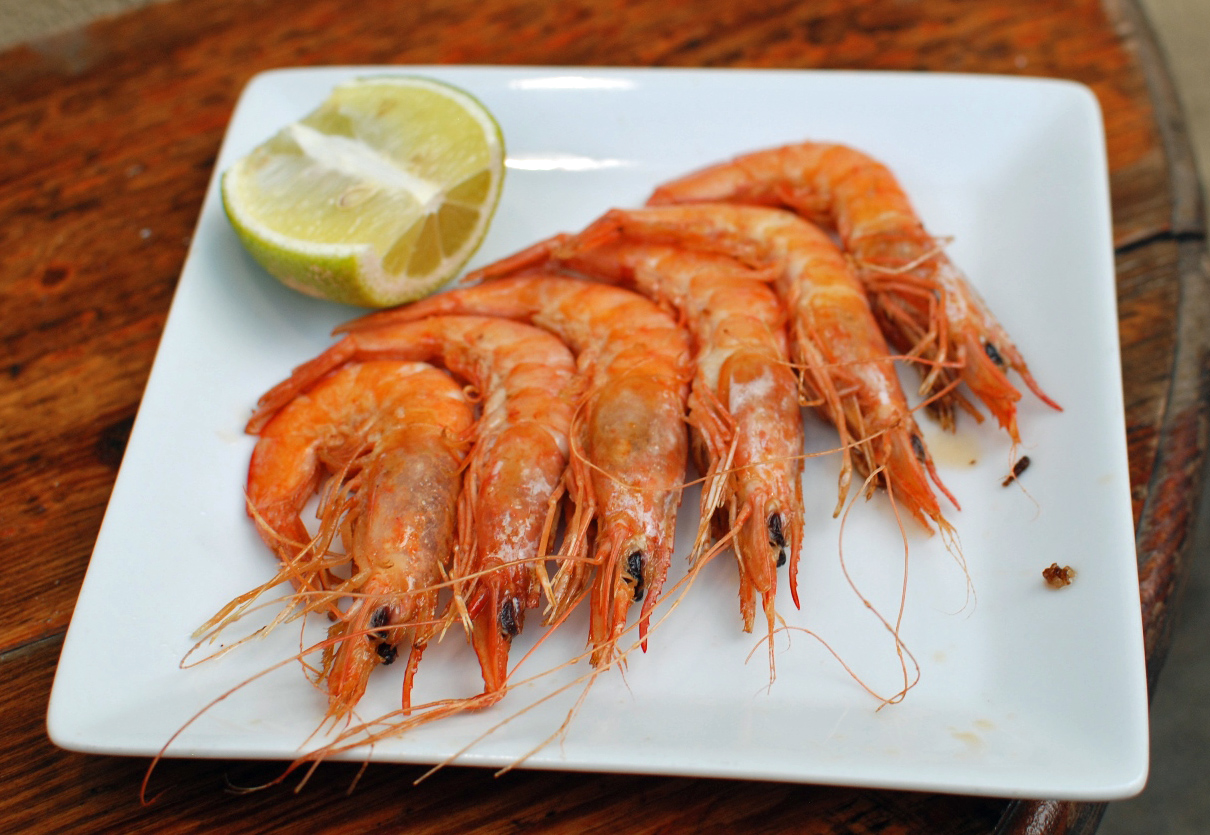
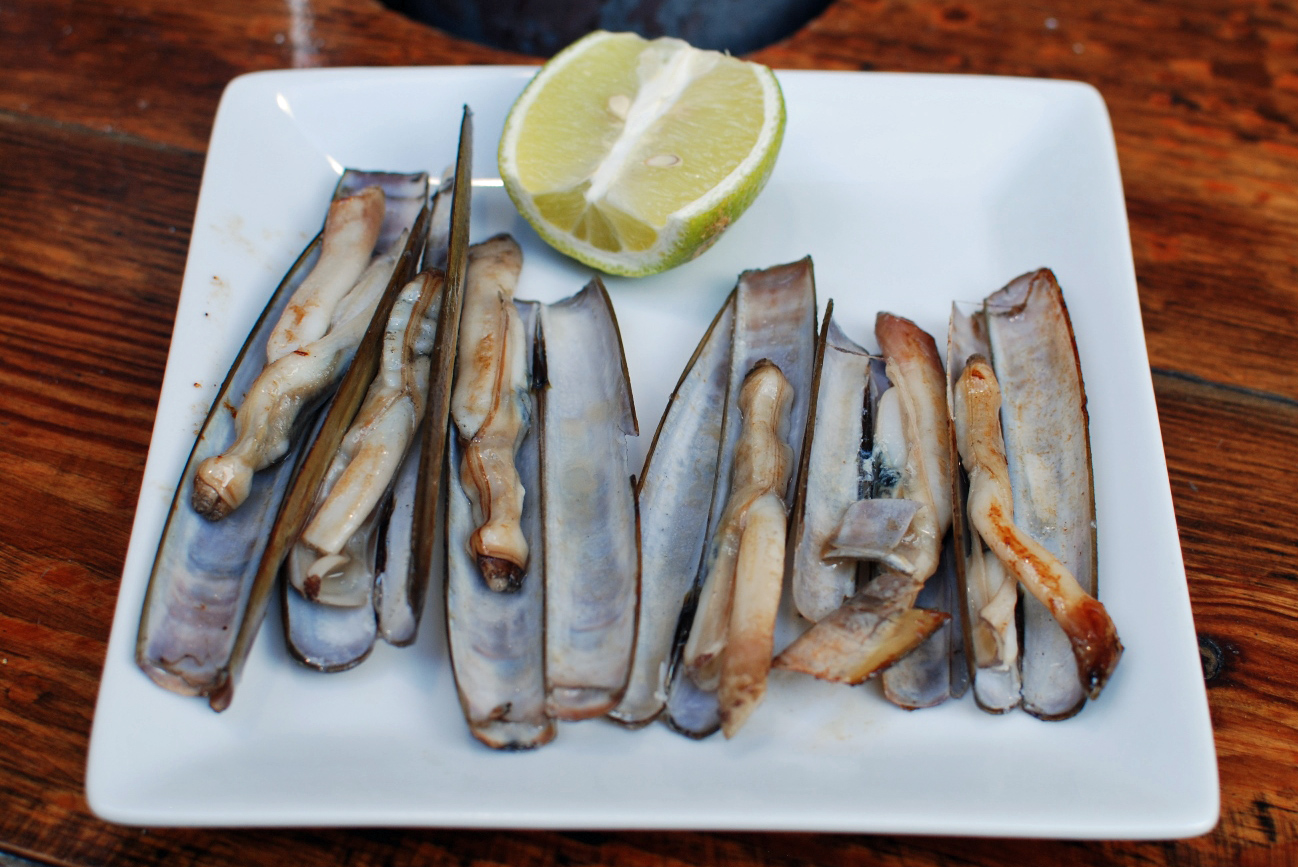
The tuna having whet our appetite for more seafood, we stopped by Juana la Loca, a closet-sized seafood bar with a comical graphic of Juana over its door. We were drawn in by its inviting outdoor wine barrels-turned-tables, and its all sorts of grilled seafood pinchos and raciones, or larger dishes. We started with some razor clams served with just a squeeze of lime and a hint of smokiness from the charcoal.
Next, large, bright red plump head-on prawns. The high heat reduced their shells to just a crackling crunch. So, we crunched these prawns, shell and all, and watched as the locals sucked the shrimp heads before partaking ourselves.
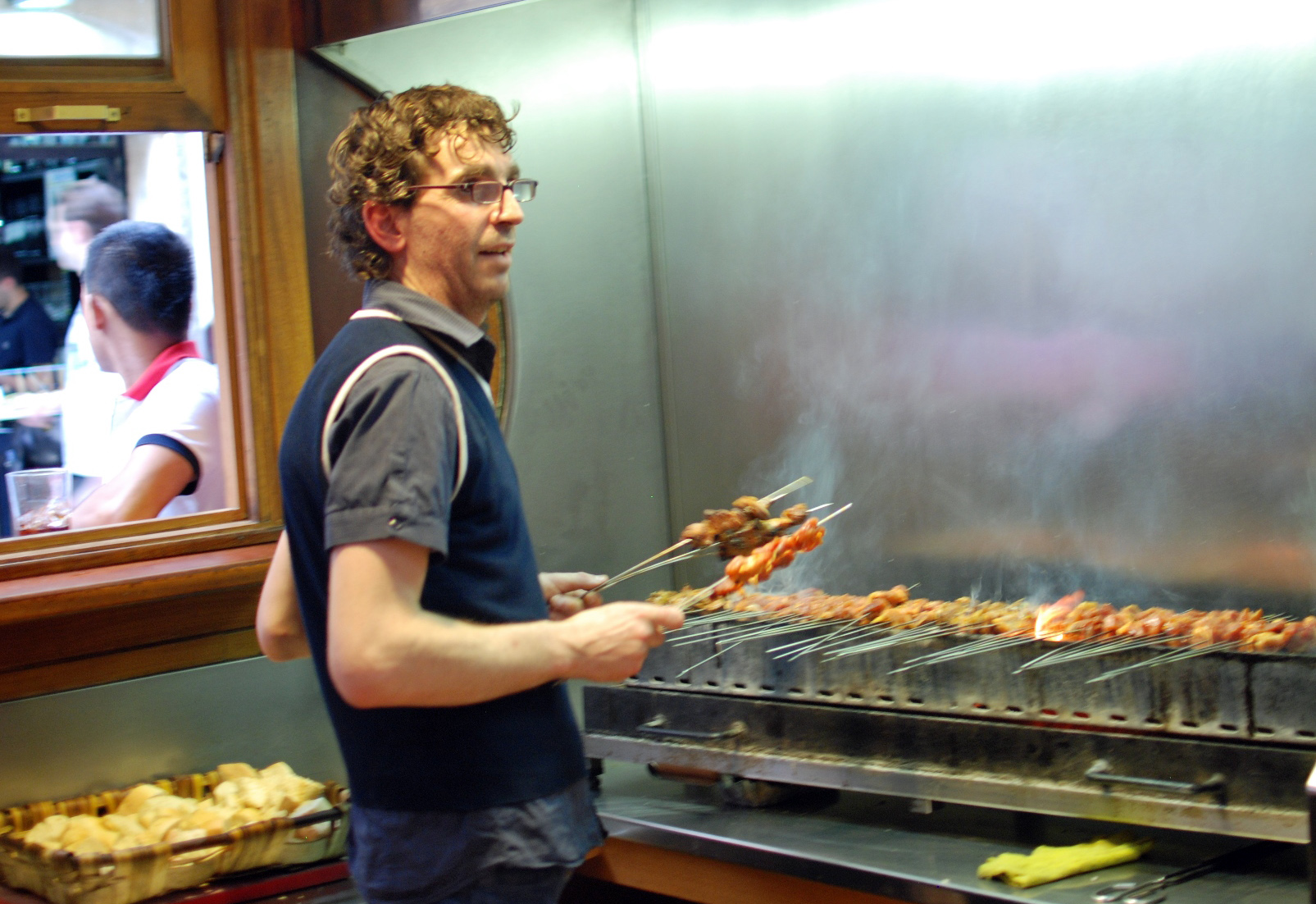
Our pincho hopping concluded at Paganos, where one man was grilling literally hundreds of pork skewers over charcoal on a long narrow charcoal grill. He expertly turned them all with his bare hands before handing us a pair, comically skewered with a piece of baguette. For this, we opted for some local beer and enjoyed the just-off-the-grill taste of meat and beer on a hot summer day.
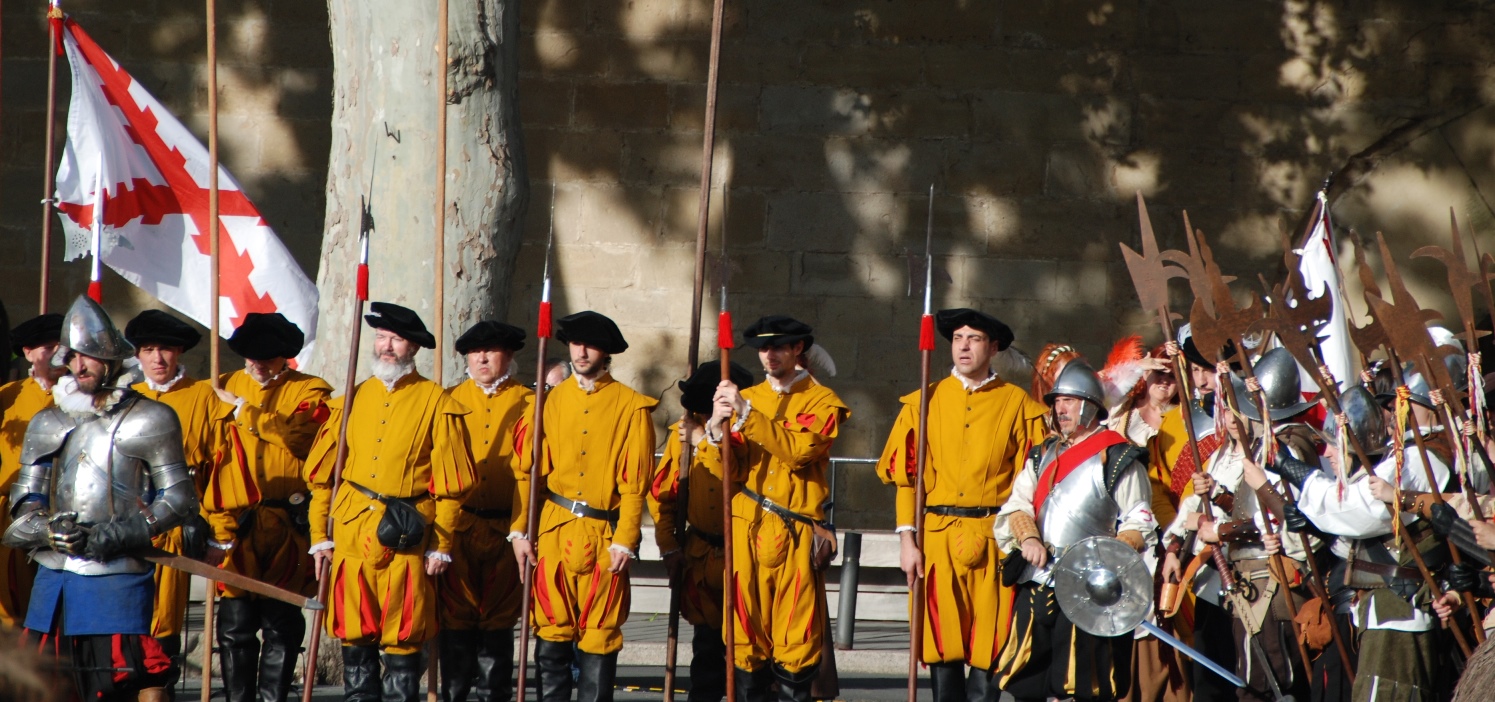
On our way out of town, we saw a huge commution going on at the town’s square. When we got closer, we saw an incredible battle reinactment was taking place, with men in full metal armor and brightly colored uniforms and flags. We weren’t sure which battle occurred in Logroño, but I’m sure it was a good one!
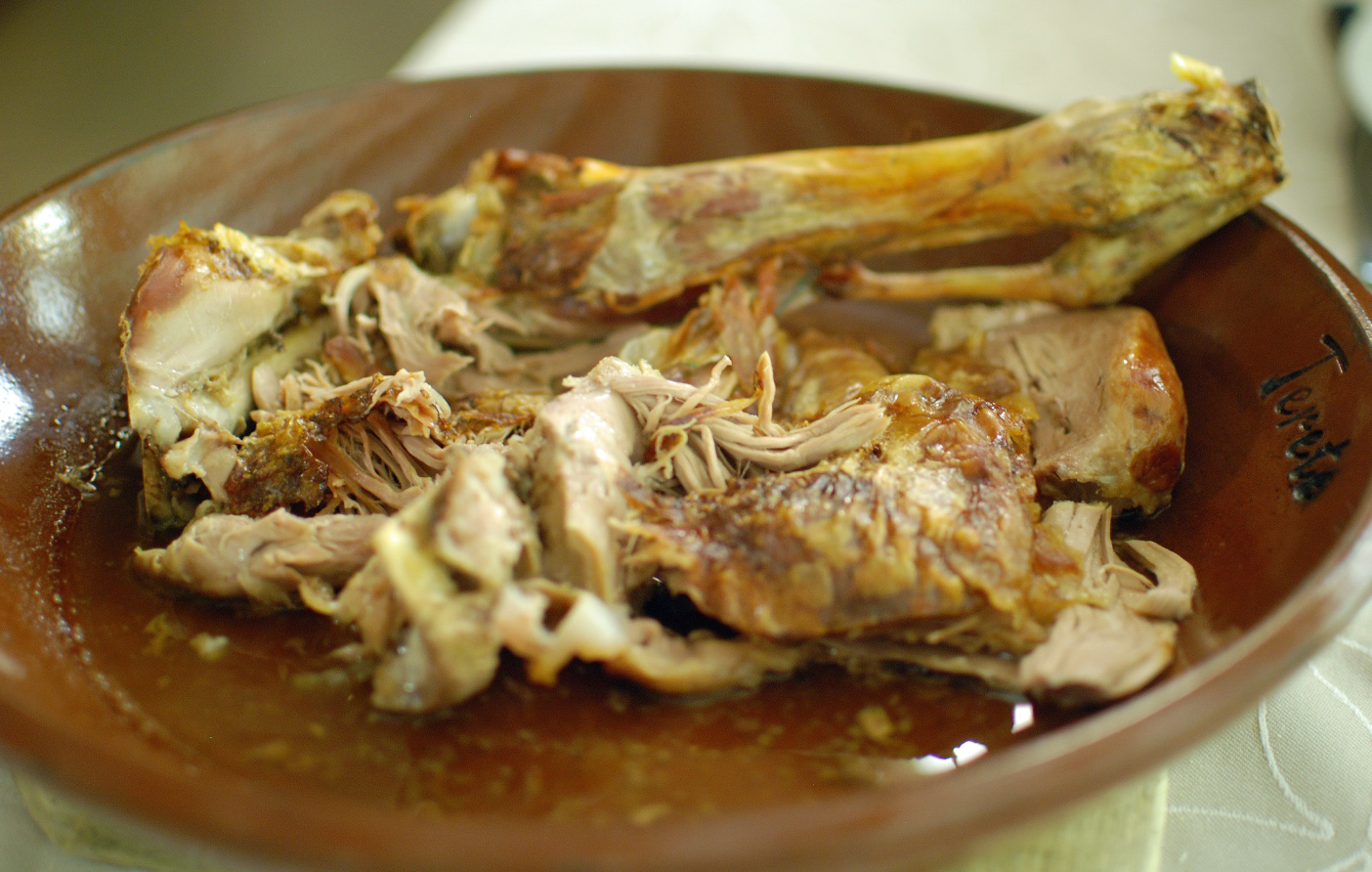
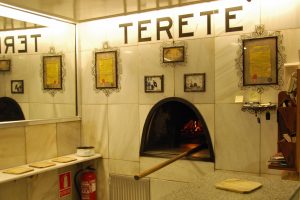
That night we headed to Rioja’s next biggest city for dinner, Haro. This city had a much different feel, being surrounded on all sides with vineyards. We ventured into Terete, known for its wood-fired lamb (cordero asado), a popular classic in many parts of Spain that the nice people at Terete cut off the bone for you table side. You can’t miss the huge wood-fired oven built into the wall near as you walk in.
The lamb was, as expected, delicious, with crispy outsides and the smokiness you can only get from wood fire.
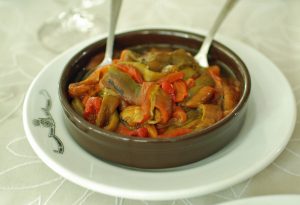
Peppers roasted in the same oven were also a treat, but everything else we tried was merely ordinary. Even the white asparagus that the locals urged us to try were just ok and a bit mushy. But the lamb and our bottle of crianza were extraordinary.
With our stomachs fill of lamb and red wine, we headed back to the safety of our hotel, where we were protected from Roman invasion within the walled city of Laguardia.
As we said goodbye to the rolling fields of grapes in Rioja, our next stop was back to the Basque region and San Sebastian, with a stop on the way at Asador Etxebarri, one of the best restaurants in the world.
